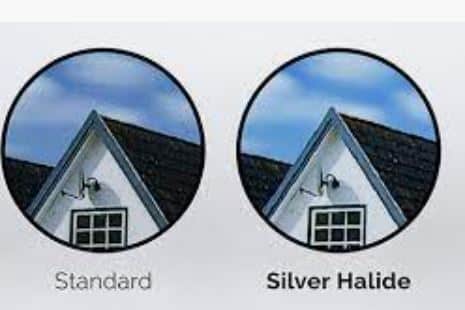If you’re new to the print-on-demand game, you’re probably trying to figure out all the different printing methods available. It can be a lot to take in! Surprisingly, there are so many printing options to choose from! You’ve got screen printing, inkjet printing, and even dye-sublimation printing. Let’s not forget silver halide printing.
The product you intend to print on and the desired finish will determine the best printing method. Understanding the silver halide printing process and the pros and cons of silver halide picture prints is the focus of this piece. First, though, we should clarify: what exactly is silver halide?

Understanding Silver Halide Printing
What is Silver Halide?
Silver halide printing involves the use of silver halide crystals, typically silver chloride or silver bromide, as the light-sensitive chemical. These crystals are embedded in a gelatin emulsion layer, which is coated onto high-quality photographic film paper. The resulting prints, known as silver halide prints, display exceptional details, contrast, and tonal range.
The Science Behind Silver Halide Crystals
The magic of silver halide printing lies in the light sensitivity of silver halide crystals. When exposed to light, these crystals undergo a chemical reaction, capturing and storing the image. The exposed crystals transform into metallic silver during the development process, forming the visible image. The unexpected crystals are removed, leaving a remarkable print with lifelike colours and intricate details.
The Process of Silver Halide Printing
Capture and Transfer
To begin the silver halide printing process, an image is captured either through traditional film photography or digitally. The captured image is then transferred onto silver halide emulsion-coated paper through various methods, including contact printing or a digital enlarger.
Exposure and Development
Once the image is transferred onto the paper, it is exposed to light. The light interacts with the silver halide crystals, initiating a chemical reaction that forms a latent image. This latent image becomes visible during the subsequent development process, where the paper is immersed in developer chemicals. The developer chemicals convert the exposed silver halide crystals into metallic silver, creating the final image.
Enhancement and Finishing Touches
Silver halide prints offer the opportunity for adjustments and enhancements during the printing process. Photographers and printmakers can fine-tune the image’s contrast, brightness, and colour balance to achieve the desired result. Once the print is perfected, it goes through additional steps, such as fixing and washing, to ensure its longevity and stability.
Advantages of Silver Halide Prints
Unmatched Image Quality
Silver halide prints are renowned for their exceptional image quality. The inherent properties of silver halide crystals result in prints with a wide tonal range, sharpness, and fine detail. These prints truly bring images to life, preserving the depth and nuances of the captured moments.
Exceptional Longevity and Durability
Silver halide prints are known for their archival properties. The metallic silver formed during the development process is stable and resistant to fading, discolouration, and environmental factors. Properly stored silver halide prints can retain their beauty and quality for generations, allowing future generations to experience the same emotions and connections.
Versatility and a Wide Range of Applications
Silver halide prints find applications in various domains. Fine art photographers and professional photographers often choose silver halide prints to showcase their work due to their unparalleled quality and longevity. Moreover, silver halide prints are used in commercial settings, such as advertising, exhibitions, and displays, where capturing attention to detail and colour accuracy is paramount.

Comparing Silver Halide Prints to Other Printing Methods
Inkjet Printing
While inkjet printing has gained popularity in recent years, it often falls short when compared to silver halide prints. Inkjet prints may lack the same level of detail, tonal range, and longevity as silver halide prints. However, inkjet prints offer advantages in terms of cost-effectiveness, convenience, and the ability to print on a wide range of media.
Digital Printing
Digital printing, although versatile and convenient, may not match the precise colour accuracy and archival qualities of silver halide prints. Digital prints can be susceptible to fading over time, especially when exposed to sunlight or environmental elements. However, digital printing provides quick turnaround times and the ability to make adjustments on the fly.
Silver Halide Printing In The Digital Age
Transition to Digital Negatives
Silver halide printing has adapted to the digital era with advancements in technology. Digital negatives, created from digital image files, can be used in place of traditional film negatives. These digital negatives allow for greater flexibility, easier storage, and the ability to reproduce prints from digital sources.
Integration with Digital Workflows
Photographers and printmakers can seamlessly integrate silver halide printing into their digital workflows. Hybrid approaches that combine the advantages of digital editing and manipulation with the unmatched print quality of silver halide prints have gained popularity. This fusion of technologies ensures the best of both worlds for photographers and print enthusiasts.
Exploring the Future of Silver Halide Printing
Technological Advancements
The world of silver halide printing continues to evolve with technological advancements. Researchers are constantly exploring new silver halide crystal technologies that offer enhanced sensitivity, reduced grain, and improved image quality. These advancements may lead to faster printing speeds and increased efficiency.
Evolving Applications
As the art world and photography industry evolve, silver halide prints continue to find new applications. From large-scale installations to customised art pieces, the enduring appeal of traditional photography in a digital world remains strong. Silver halide prints offer a tactile and immersive experience that digital displays cannot replicate.
Conclusion
Silver halide printing is a testament to the timeless beauty of physical prints. Through the use of silver halide crystals and meticulous development processes, photographers and printmakers can create exceptional prints that capture the essence of precious moments. With unmatched image quality, longevity, and versatility, silver halide prints continue to stand as a symbol of preserving memories and showcasing artistry. So, embrace the magic of silver halide printing from professionals such as Australian Photo Supplies and breathe life into your photographs, allowing them to be cherished for generations to come.
